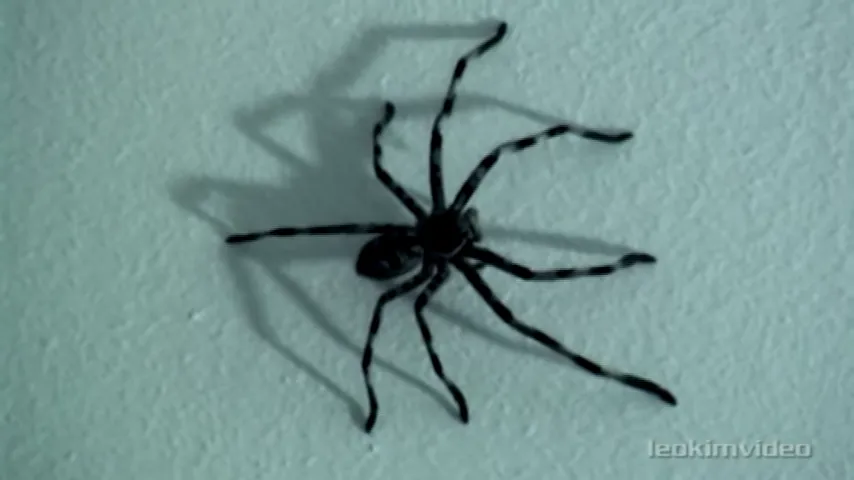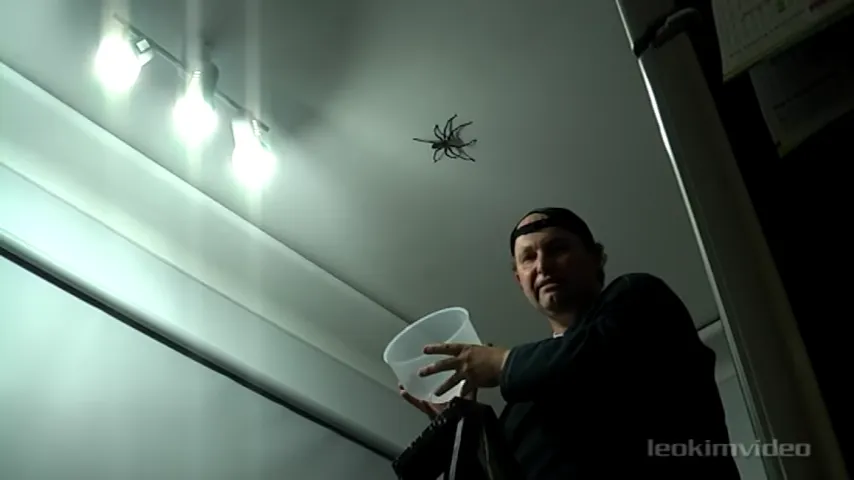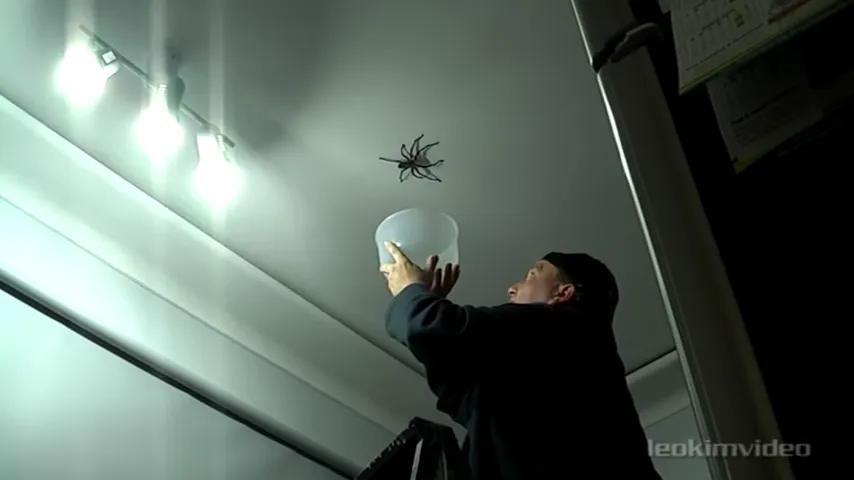Spiders often find their way into our homes, silently weaving their webs and waiting patiently for their prey. While these creatures play a crucial role in the ecosystem, controlling pests, their presence on ceilings can be quite disconcerting. High, out-of-reach locations become their safe havens, leaving many of us puzzled about their removal.
For those grappling with the dilemma of a spider on the ceiling, the ideal approach involves safe, effective, and efficient techniques to get rid of them. This not only ensures that the spider is dealt with but also that your home remains a comfortable and spider-free zone.
Spiders on the ceiling might seem like a trivial concern, but their placement makes them notably challenging to deal with. Their choice of such locations, the prevention techniques, and the various methods to handle them effectively are all elements worth noting for every homeowner.
Why Spiders Choose Ceilings
Have you ever wondered why spiders seem to favor the lofty heights of your ceiling? To uncover the answer, it’s essential to dive into the spider’s psyche and explore the environment it gravitates towards. Here are some insights into why these creatures opt for such locations:
Natural Habitat Similarities
Spiders are adept climbers, and their ability to scale surfaces with ease is a testament to their natural habitats. In the wild, many spiders occupy treetops, high vegetation, or cliffs. This inclination to be high up is rooted in their survival instincts. High places resemble their natural habitats where they have an expansive view and a strategic advantage.
Safety from Predators
Ceilings offer an invaluable refuge for spiders. Elevated locations ensure they remain out of reach from many of their natural predators. It’s not just about evading birds or larger insects; ceilings also keep them hidden from humans, their unintentional predators. Safe from disturbances, they can spin their webs in peace and lie in wait for unsuspecting prey.

Proximity to Prey
Speaking of prey, ceilings are often buzzing with activity. Small insects, lured by indoor lights, often hover near the ceiling, making it a perfect hunting ground. Spiders are opportunistic hunters. By positioning themselves in these high traffic zones, they maximize their chances of snagging a meal.
Prevention Before Action
Knowing why spiders prefer ceilings equips homeowners to take preventative measures. Before resorting to reactive measures to get rid of them, it’s wiser to adopt practices that make your home uninviting for these arachnids.
Seal Cracks and Openings
• Begin by inspecting your home for small cracks, gaps, or openings. These can serve as entry points for spiders and other pests. • Use sealants or caulking to close off any potential access points. This is especially crucial around windows, doors, and in the attic or basement regions. • Mesh screens on windows and ventilators can also deter spiders from making their way inside.
Regular Cleaning Practices
Routine cleaning can go a long way in ensuring your home isn’t spider-friendly.
• Dusting and vacuuming regularly, especially in corners and less-frequented areas, will destroy any webs in formation and deter spiders from setting up residence. • Clearing away clutter is equally vital. A cluttered home provides numerous hiding spots for spiders, making them feel more at home.
Reduce Indoor Insect Populations
Reducing the number of insects in your home can help make it less attractive to spiders. After all, if there’s no food, there’s less incentive for spiders to stay.
• Using mosquito nets and keeping doors and windows closed during evenings can reduce insect entry. • Consider using indoor plants that act as natural insect repellents. Plants like lavender, chrysanthemums, and mint can help in reducing indoor insect populations.
In the battle against ceiling-dwelling spiders, knowledge is power. Being aware of why these arachnids prefer such locations can guide homeowners in crafting effective strategies to ensure their living spaces remain spider-free. While their presence is often harmless, comfort and peace of mind are paramount, and adopting preventive measures can keep these eight-legged guests at bay.

Ways to Kill a Spider on The Ceiling
Spiders can be both a nuisance and a source of fear for many. While they typically mean no harm, having them on your ceiling can be unsettling. If you’ve spotted a spider lurking up there, here’s a comprehensive guide to address the issue:
Use of Extendable Tools
Brushes with Long Handles A simple yet effective way to address ceiling spiders. Opt for brushes with long, firm bristles. The length ensures you stay at a safe distance, while the bristles can gently push the spider down.
Vacuum with Extension Nozzle Another handy tool is a vacuum cleaner with an extension nozzle. It’s particularly useful for spiders that are out of reach. The strong suction pulls the spider in, ensuring no escape.
Insect Sprays
Recommended Products There are numerous insect sprays available in the market. It’s vital to select one specifically designed for spiders to ensure efficacy. Brands like Raid and Terro offer spider-specific formulations.
Proper Usage and Safety Precautions • Always read the label instructions. • Spray directly onto the spider from a safe distance. • Ensure good ventilation in the room. • Avoid contact with skin and eyes.
Sticky Traps
Placement Strategies Place these traps near light sources or in corners of the room. Light attracts insects, which in turn attract spiders.
Benefits Over Toxic Methods Sticky traps are non-toxic and pose no threat to humans or pets, making them a favored choice for many.

Jar and Card Technique
Steps for a Safe Catch • Approach the spider slowly with a jar or glass. • Gently place the jar over the spider. • Slowly slide a card or stiff paper under the jar, trapping the spider inside.
Release or Disposal You can choose to release the spider outdoors or dispose of it, depending on your preference.
Natural Repellents
Essential Oils as Deterrents Certain essential oils like peppermint, tea tree, and lavender are known to repel spiders.
DIY Repellent Mixtures Combine water with a few drops of your chosen essential oil in a spray bottle. Spritz this mixture in spider-prone areas as a deterrent.
Insecticide Dusts
Application Tips • Apply in thin layers using a duster. • Focus on cracks, corners, and other spider hideouts.
Duration and Effectiveness Insecticide dusts can remain effective for several months. They not only kill spiders but also deter other pests.
Seek Professional Help
When to Consider If you’re dealing with a severe infestation or large, potentially dangerous spiders, it’s wise to call in the experts.
Advantages Over DIY Methods Professionals come equipped with the right tools, knowledge, and insecticides to handle spiders effectively. They can also provide tips for future prevention.
Safety Precautions
Protective Wear Always wear gloves when using insecticides or sprays. If you’re sensitive to chemicals, consider wearing a mask as well.
Aftercare for Sprayed Areas • Ventilate the area well. • Keep pets and children away until the spray has dried. • Wipe down surfaces that may have come in contact with the spray.
Keeping Out of Children’s Reach All repellents, traps, and insecticides should be stored in a safe place, away from the curious hands of children.
Tackling spiders on the ceiling requires a blend of the right techniques and safety measures. While DIY methods can be effective, don’t hesitate to seek professional help if the situation demands. Your safety and comfort are paramount.
Frequently Asked Questions
H3: Why do spiders prefer ceilings? Ceilings offer spiders a vantage point for capturing prey, and they’re less likely to be disturbed by human activity.
H3: Are all ceiling spiders venomous? No, most spiders are harmless. Only a small percentage of spiders possess venom harmful to humans.
H3: How can I prevent spiders from coming back? Regular cleaning, sealing cracks, and using natural repellents can help deter spiders from re-entering.
H3: Is it safe to use insecticides indoors? Yes, but always follow the manufacturer’s guidelines, ensure proper ventilation, and keep away from children and pets.
H3: Can spiders cause any damage to my home? Spiders don’t cause physical damage to homes, but their webs can be unsightly and might indicate other insect problems.
Conclusion
Spiders, with their unique ability to access various nooks and crannies of a house, have always posed a challenge for homeowners. Their presence on ceilings, while not harmful, can be a nuisance, especially for those with arachnophobia. Addressing this issue requires a blend of understanding their habits and employing effective techniques.
Being equipped with the right knowledge and tools can transform the daunting task of spider removal into a manageable one. While professional assistance remains a reliable option, numerous methods can be carried out at home, ensuring the sanctity of one’s personal space.
Ultimately, the focus should not only be on removal but also on preventive measures. Ensuring that the home environment remains unfriendly to spiders will guarantee peace of mind and a cleaner living space.